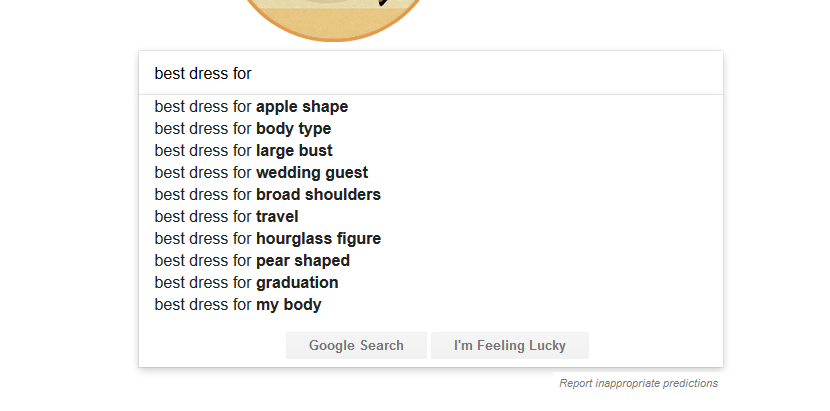Boost Rankings & UX with Proper Internal Linking for Ecommerce Sites

You opened your new online store, added that hot new product that people will love, but now what?
Unlike some, you make staying informed a priority, so you already know that aside from providing a good user experience, you need to get people to link to your site if you want your product to be found.
But...
Who wants to link to a product page? For that matter, most category pages are just extended product pages too, making them anything but a valuable and linkable asset.
Granted, some people will link to those pages, and if you create content for external sites, you can certainly work them in naturally with a little practice. However, you don't want a few links, you want to create a powerhouse that sucks up organic traffic and produces the kind of sales your competitors dream about.
So, today we are going to talk about how you can create content that people will link to, that will help buyers decide what they need, and in the process, will help you create an authority site. Once you have authority, (from inbound links) you need to know how best to use it, so we will cover that too.
First, it is important to understand that when an external site links to any page on your site, it gives you a certain amount of "power" that can be shared with other pages on the site. Internal linking is how you share this power with other pages. If you strategically share the "power" while creating a smooth process for shoppers, the rankings and user experience with both improve as a result.
Let's get to it.
Keyword Research Driven Buyer Guides
Google is a great tool for shoppers and sellers, if you know where to look. Unless you have invented an entirely new product, that solves a problem nobody has (may want to re-think that one) you can find out why and how people are searching.
Some of these are simple, "no show socks" in which the person is trying to solve a basic need for socks. Others can be more complex "best street/strip tires for Dodge Hellcat" in which the buyer is trying to educate themselves on the pros and cons of multiple options to determine which will best achieve their specific goal.
In either case, you need to find out what buyers of your product are looking to solve, and what type of information will help them determine which solution is the best fit for their needs.
Luckily, there is a good chance that you are not the only person to ever offer a product solving a problem, so finding how people search can be achieved with some competitor research.
For example, let's say that you are looking for a new dress. I am going to go out on a limb here and say that if you are looking for a new dress, you want the type that will best fit your body. So, we will start by heading to Google and typing "best dress for" to see what people search for.

Once you see suggestions like those above, you need to access which "problems" your store can solve. If you do not offer any dresses that would be suitable for graduation ceremonies, you shouldn't create content around that topic. If on the other hand, you have several dresses that work great with a "pear shaped" body type, this could be the start of a great piece of content.
Taking this a step further, do you offer dresses suited for several different body types? If so, you could create a piece of content around "best dresses for (body type)" that covers some of the options you offer for each body type and more important, why that type of dress is good for a body type.
Before you start writing though, lets dig a little deeper to see what is already working. Since we know the core problem we are trying to solve is "best dress for body type", let's head to Google and see what shows up.
Understanding What Google Wants to Show
As you can see above, that search turns up guides educating shoppers on the best type of dress for each body style.
To make sure your guide is visible to the most people, we are going to look at how to take the best keywords from each of your competitors and include those in your guide.
The first result from our search is: https://www.whowhatwear.com/how-to-dress-for-body-type-pear-apple-hourglass
We will take this exact url and enter it in SEMrush organic research (you could use Ahrefs for this too).
We would then repeat this for the top 5-10 sites for that keyword, export the raw data for each. Compile the list in Excel, remove duplicates, and you now have a list of potential terms. These can be used for headings, (i.e - "dresses for apple shape") in naming the guide, and throughout the content.
There is a lot that goes into keyword research, so if you aren't familiar with the concept, check out this keyword research guide from Backlinko.
Most importantly, you want to make sure you are showing your expertise in the guide. If a customer came into your store, how would you help them select a dress? Your guide should do the same thing for online customers.
The more informative, authentic, and helpful your guide is, the more people will be willing to link to it as well. The power you can share internally goes up each time an external site links to your guide, so this is very important.
If you aren't familiar with link building, check out The Beginner's Guide to Effective Outreach Link Building.
To make the most of any new links you secure, you want to make sure your internal links are setup correctly.
Strategic Internal Linking
In the recent past, "PageRank Sculpting" was a popular and controversial topic. The ideal behind this was that by adding 'no-follow' tags to menu items and internal links, you could control the flow of power between pages on your site.
For today, we are not discussing, nor encouraging the practice of PR Sculpting, we are instead focusing on how to effectively create contextual internal links between pages on your site.
Typically, the hierarchy of an online store will contain a main category page, a sub-category page, and a product page. Outside of this, you will also see FAQ pages, about pages, buyer guides, and blog posts.
Traditional ecommerce link building strategies would focus upon getting links to category, sub-category, or product pages. However, since you have created (or will be creating) an epic buyer guide that helps people find the perfect product, you are going to promote that asset instead.
Taking a step back, let's say that you have a category of dresses that are perfect for "pear shaped" women and another category with dresses that are meant for "apple shaped" women. Within your guide, outlining the best type of dresses for each body type, pick some of your best sellers that fit and link to them from within the guide.
As we touched on earlier, the authority gained from external links pointing to your buyer guide will flow through to your product and category pages. This looks 100% natural and if you change products or even remove a category, you simply go back and update the buyer's guide. This will give your new pages a boost.
You may have even heard of this strategy before, the big difference being the old strategy used private blog network sites to control the flow of link power instead of doing things the right way and promoting useful information.
Since your store isn't a disposable asset, you want to put in the extra effort to do things in the safest and longest lasting manner.
Once you have promoted your content assets, you may still need more links, so don't be afraid to link directly when needed.
Selective Link Building
Earlier I mentioned that with a little creativity or by producing valuable content to be shared on another website, you could build links to category or product pages.
Over time, the content pieces on your site will acquire links and build authority. Even so, in some cases, you may need to build some links directly to a page to crack the coveted top three positions.
In these cases, guest posting or blogger outreach are going to be the two most effective means of building links.
Putting the Plan Into Action
The internet is overflowing with "how to" guides ranging from impractical to overwhelmingly informative.
While it is very important to understand the fundamentals, to keep your site safe in the long run, failing to take any action will most certainly result in failure.
Even if your first guide only gains a few links through outreach, ask for feedback, find out why people didn't love it, and try again.
If you don't have time to waste on trial and error, hire a professional. If you do have time to tackle this yourself, get started, share your content, and improve it along the way.









